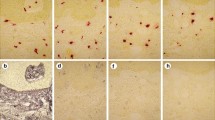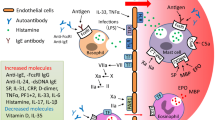Abstract
The polypeptides C3a and C5a are released as protein cleavage byproducts during activation of the complement system. These substances are able to release histamine from mast cells and this has generally been thought to be the link between complement activation and increased microvascular permeability in inflammatory reactions. Recent observations of inflammatory responses in the skin suggest that there is another link, which does not involve histamine. This is potentially of more general importance since antihistamines have limited effects on the majority of inflammatory reactions. One of the complement protein fragments, C5a (with or without carboxyl terminal arginine which is necessary for histamine release), is very potent in increasing vascular permeability. However, protein leakage leading to tissue oedema in skin is difficult to detect unless an arteriolar dilator is present. There is evidence that C5a and a vasodilator prostaglandin can be generated together extravascularly in response to a microbial stimulus. Unlike histamine, C5a does not act directly on venular endothelial cells, but triggers a very rapid interaction between circulating polymorphonuclear leukocytes and venular endothelial cells which, by an unknown mechanism, results in elevated venular permeability to plasma proteins.
Similar content being viewed by others
References
W. Vogt,Activation, activities and pharmacologically active products of complement, Pharmac. Rev.26, 125–169 (1974).
T.E. Hugli, Chemical aspects of the serum anaphylatoxins. InContemporary Topics in Molecular Immunology, vol. 7 (Eds.R.A. Reisfeld andF.P. Inman). Plenum Press, New York and London 1978.
E. Friedberger,Weitere Untersuchungen über Eiweissanaphylaxie, Z. ImmunForsch: exp. Ther.4, 636 (1910).
G.L. Larsen, K. McCarthy, R.O. Webster, J. Henson andP.M. Henson,A differential effect of C5a and C5a desArg in the induction of pulmonary inflammation, Am. J. Pathol.100, 179–192 (1980).
D.E. Hammerschmidt, L.J. Weaver, L.O. Hudson, P.R. Craddock andH.S. Jacob,Association of complement activation and elevated plasma C5a with adult respiratory distress syndrome, Lanceti, 947–949 (1980).
T.J. Williams andP.J. Jose,Mediation of increased vascular permeability after complement activation: histamine-independent action of rabbit C5a, J. exp. Med.153, 136–153 (1981).
C.V. Wedmore andT.J. Williams,Control of vascular permeability by polymorphonuclear leukocytes in inflammation, Nature, Lond.289, 646–650 (1981).
P.J. Jose, M.J. Forrest andT.J. Williams,Human C5a des Arg increases vascular permeability, J. Immun.127, 2376–2380 (1981).
T.J. Williams andM.J. Peck,Role of prostaglandin-mediated vasodilatation in inflammation, Nature, Lond.270, 530–532 (1977).
T.J. Williams,Prostaglandin E 2, prostaglandin I2 and the vascular changes in inflammation, Br. J. Pharmac.65, 517–524 (1979).
F. Hahn andA. Oberdorf,Antihistaminica und anaphylaktoide Reaktionen, Z. ImmunForsch. exp. Ther.107, 528 (1950).
B. Damerau andW. Vogt,Effect of hog anaphylatoxin (C5a) on vascular permeability and leukocyte emigration in vivo, Naunyn-Schmiedebergs Arch. exp. Path. Pharmak.295, 237–241 (1976).
Author information
Authors and Affiliations
Rights and permissions
About this article
Cite this article
Williams, T.J. Vascular permeability changes induced by complement-derived peptides. Agents and Actions 13, 451–455 (1983). https://doi.org/10.1007/BF02176415
Issue Date:
DOI: https://doi.org/10.1007/BF02176415




